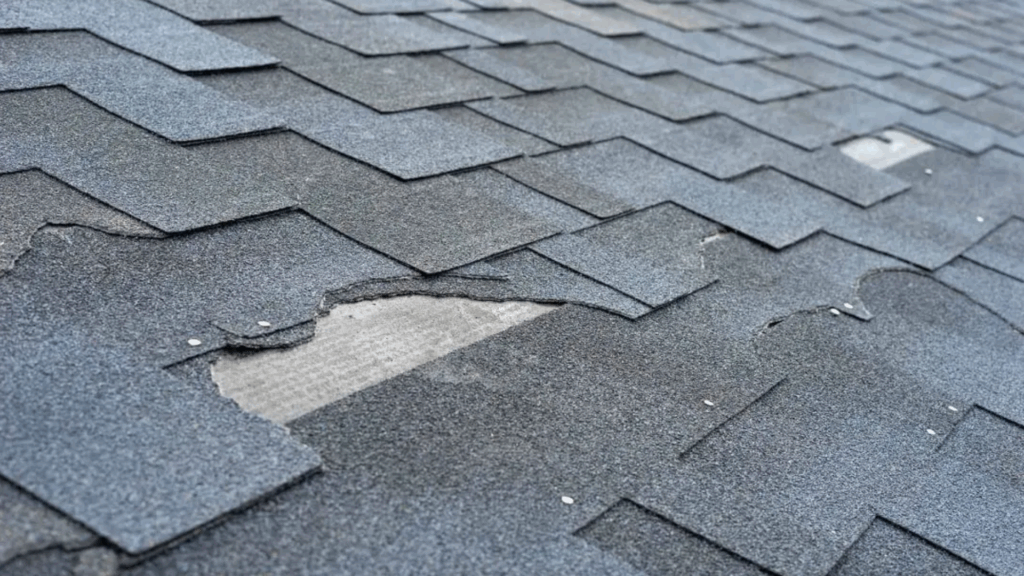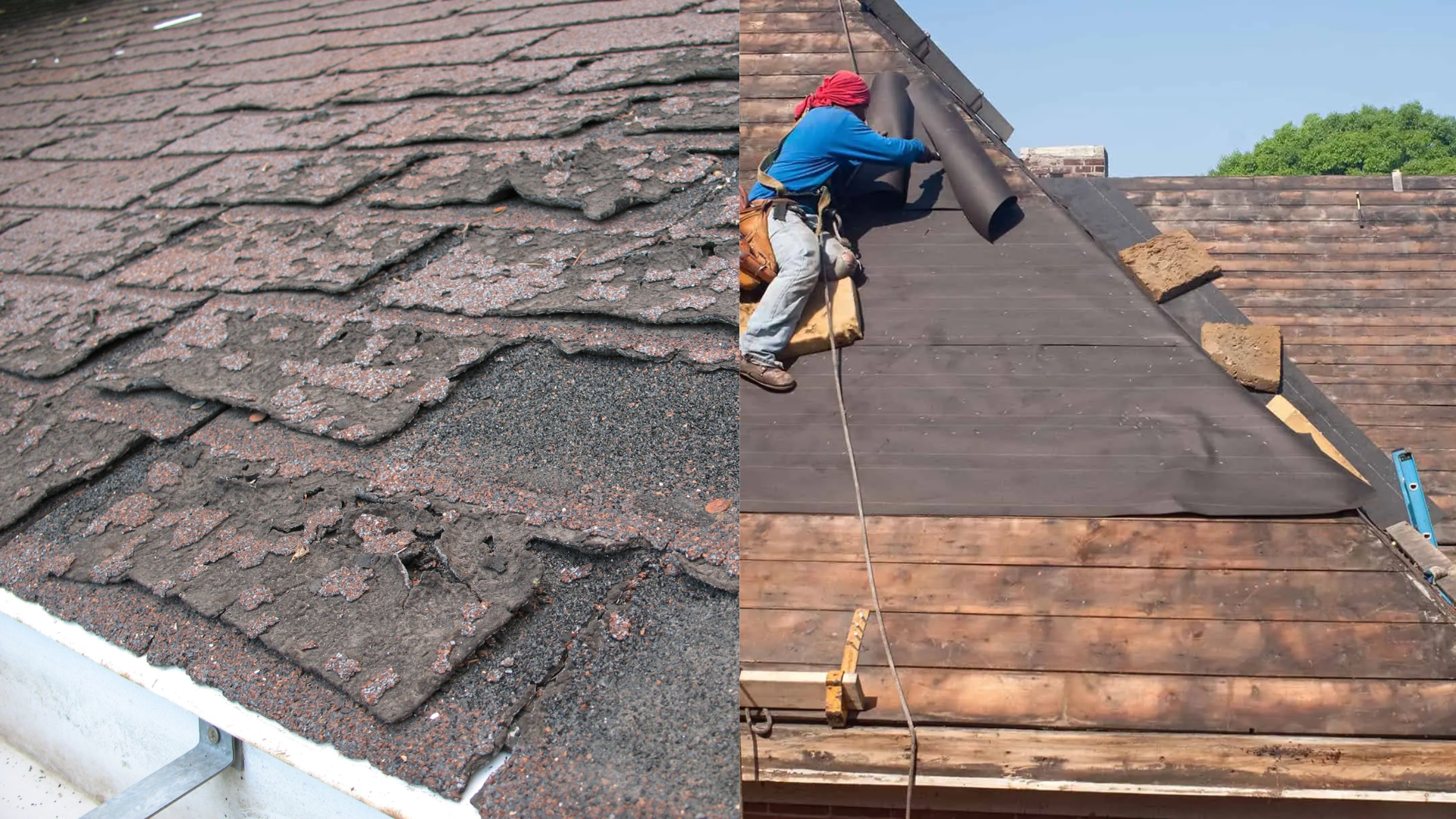Asphalt shingles are a popular roofing material in the U.S. due to their affordability, easy installation, and variety of styles.
However, like all materials, they don’t last forever. Understanding their lifespan is essential for maintenance and planning a replacement.
In this blog, I’ll break down the average lifespan of asphalt roofs and the factors that affect their durability, from the type of shingles to climate conditions.
Knowing these factors helps you stay ahead of potential issues and maintain your roof’s condition for as long as possible.
By the end, you’ll be equipped to make informed decisions about your asphalt roof’s care.
Asphalt Shingle Roof Lifespan: What to Expect
The lifespan of an asphalt shingle roof typically ranges from 15 to 30 years, depending on factors like shingle quality and climate.
Basic 3-tab shingles last 15 to 20 years, while higher-quality architectural or luxury shingles can last 30 to 40 years with proper care.
Climate conditions, such as extreme temperatures, heavy rainfall, and sun exposure, can shorten the roof’s lifespan.
Regular maintenance, like cleaning gutters and checking for damaged shingles, can help extend its life.
Understanding these factors will help you maintain your roof and plan for its replacement, ensuring it lasts as long as possible.
Factors Affecting Asphalt Roof Lifespan

Understanding the key factors that impact the lifespan of your asphalt roof can help you make informed decisions about its care and maintenance.
1. Shingle Quality
The quality of the shingles used plays a major role in how long your roof will last. Basic three-tab shingles last around 15-20 years, while architectural shingles can last 25-30 years.
Luxury shingles, known for their durability and aesthetic appeal, can last 40 years or more with proper care.
2. Climate and Weather Conditions
Extreme weather conditions, like intense sunlight, hailstorms, or heavy snow, can shorten the life of your asphalt roof.
In regions with harsh winters or excessive sun exposure, shingles may deteriorate faster, losing granules or becoming brittle, which reduces their effectiveness and lifespan.
3. Installation Quality
Proper installation is crucial for the roof’s longevity. Incorrect nailing, inadequate ventilation, and poor workmanship can lead to early roof failure.
Hiring a reputable contractor ensures that the roof meets local building codes and manufacturer guidelines, maximizing its lifespan.
4. Maintenance Practices
Regular maintenance can extend the lifespan of an asphalt roof.
Cleaning gutters, inspecting shingles, and addressing issues promptly can prevent water infiltration and other damage, allowing the roof to last longer.
Neglecting maintenance can cause more severe problems, speeding up roof deterioration.
5. Ventilation and Insulation
Proper attic ventilation and insulation help maintain the roof’s integrity by regulating temperature and moisture levels.
Poor ventilation can lead to heat buildup, causing shingles to age prematurely.
Ensuring good airflow keeps the roof in good condition and can extend its lifespan.
Signs Your Asphalt Roof Needs Replacement
As asphalt roofs age, certain warning signs can indicate the need for replacement. Keep an eye out for these indicators:
- Curling or Buckling Shingles: Shingles that curl or buckle are a sign of aging or poor ventilation, which can lead to water infiltration.
- Granule Loss: Excessive granules in your gutters often indicate that shingles are worn and nearing the end of their lifespan.
- Leaks or Water Stains: Water stains or leaks inside your home, especially after rain, suggest that your roof is no longer effectively keeping moisture out.
- Visible Cracks or Holes: Cracks or holes in the shingles expose the underlying layers of the roof, making it more susceptible to damage from weather.
- Sagging Roof Deck: A sagging roof deck indicates structural issues that require immediate attention and may point to water damage.
- Missing Shingles: If you notice sections of your roof are missing shingles, it can leave your roof vulnerable to leaks and further damage.
- Dark Spots or Streaks: Dark spots or streaks on your roof may indicate algae or moss growth, which can trap moisture and deteriorate the shingles over time.
- Excessive Moss or Algae Growth: Moss or algae growth can trap water and accelerate the degradation of shingles, especially in areas with high humidity.
- Higher Energy Bills: If you notice a sudden spike in energy costs, your roof may not be providing proper insulation, potentially requiring a replacement.
- Old Age of the Roof: If your roof is more than 20 years old, it might be nearing the end of its life, and a professional inspection should be scheduled.
How much will a new asphalt roof cost?
The cost of installing a new asphalt roof can vary depending on factors such as the size of your home, the type of shingles chosen, and the complexity of the installation.
On average, homeowners in the U.S. can expect to pay between $5,000 and $10,000 for a new asphalt roof.
Basic three-tab shingles tend to be more affordable, while architectural or luxury shingles may increase the cost.
The cost per square (100 square feet) typically ranges from $100 to $400, depending on the shingle type.
Additional expenses like labor, removal of the old roof, and possible structural repairs can also add to the total cost.
Other factors such as geographic location, roofing contractor rates, and the pitch of your roof may influence the price.
To get an accurate estimate, it’s best to obtain multiple quotes from licensed roofing contractors in your area.
Maintenance Tips After Roof Replacement
Proper care and maintenance after your roof replacement will help ensure its longevity and performance.
- Inspect the Roof Regularly: Check your roof at least twice a year, especially after storms, to spot any potential damage.
- Clean Gutters and Downspouts: Keep gutters free of debris to prevent water from backing up and causing roof damage.
- Trim Overhanging Branches: Cut back branches that could scrape or damage the roof or drop debris.
- Remove Debris: Regularly clear leaves, branches, or moss from the roof to avoid damage and buildup.
- Check for Granule Loss: If you notice an excessive amount of granules in your gutters, it could indicate premature wear on the shingles.
- Ensure Proper Ventilation: Ensure attic ventilation is working correctly to prevent moisture buildup, which can shorten the roof’s lifespan.
Conclusion
Replacing your asphalt roof is a significant investment, but understanding the lifespan and factors that affect it can help you maximize its longevity.
I’ve learned that regular maintenance, proper installation, and choosing high-quality materials are key to ensuring your roof stands the test of time.
If you’re unsure about your roof’s condition or need professional help, don’t hesitate to reach out to a trusted contractor.
Roof replacement doesn’t have to be overwhelming, and with the right care, it can protect your home for decades.
If you’re considering a roof replacement, I recommend getting an expert opinion and a detailed estimate to make an informed decision.
Take action today to protect your home and ensure peace of mind for years to come.
Frequently Asked Questions
Can I install a new asphalt roof over an existing one?
Yes, in some cases, roofing contractors can install new shingles over the old ones, but this depends on local building codes and the condition of the current roof.
Does roof color affect the lifespan of asphalt shingles?
Roof color can impact the temperature inside your home. Darker roofs may absorb more heat, potentially causing quicker wear, while lighter colors reflect sunlight and may reduce wear over time.
How do I choose the best asphalt shingles for my climate?
Choosing the right shingles depends on your location’s weather conditions. In areas with extreme weather, look for high-quality architectural or impact-resistant shingles that provide added durability.
Will a new asphalt roof increase my home’s value?
Yes, a new roof can increase your home’s resale value, particularly if the roof is in good condition and boosts curb appeal. Many potential buyers prefer a home with a recently replaced roof for peace of mind.

